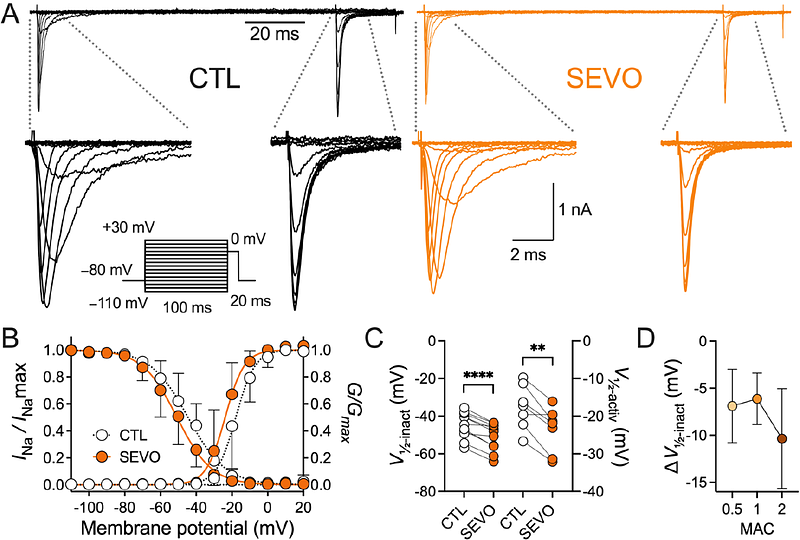Sevoflurane inhibition of the developmentally expressed neuronal sodium channel Nav1.3

Sevoflurane inhibition of the developmentally expressed neuronal sodium channel Nav1.3
Xiang, J.; Herold, K. F.; Platholi, J.; Hemmings, H. C.
AbstractNeuronal voltage-gated sodium channels (Nav) are major targets for the neurophysiological actions of general anesthetics. In the adult brain, cell type-specific effects on synaptic transmission are attributed to the differential sensitivity to volatile anesthetics of specific Nav subtypes preferentially expressed in mature neurons (Nav1.1, Nav1.2, Nav1.6). Compared to mature neurons, neurons in the developing CNS are more excitable. Since the subtype-selective effects of volatile anesthetics on Nav during early development are unknown, we determined volatile anesthetic effects on Na+ currents mediated by Nav1.3, the principal Nav subtype expressed in developing neurons. Sevoflurane at clinically relevant concentrations inhibited peak Na+ current (INa) of human Nav1.3 heterologously expressed in HEK293T cells in a voltage-dependent manner, induced a -6.1 mV hyperpolarizing shift in the voltage dependence of steady-state inactivation, and slowed recovery from fast inactivation. Nav1.3-mediated Na+ currents also exhibited distinct activation properties associated with neuronal hyperexcitability, including prominent persistent currents and ramp currents, both of which were significantly reduced by sevoflurane. The major neuronal subtype Nav1.2 showed a more hyperpolarized voltage dependence of steady-state inactivation than Nav1.3. Consistent with its lower propensity for sustained repetitive firing, Nav1.2 exhibited minimal persistent and ramp currents, and these were unaffected by sevoflurane. These findings identify subtype-specific effects of the volatile anesthetic sevoflurane on neuronal Nav subtypes and suggest a mechanistic basis for increased anesthetic sensitivity in early neuronal differentiation and maturation.